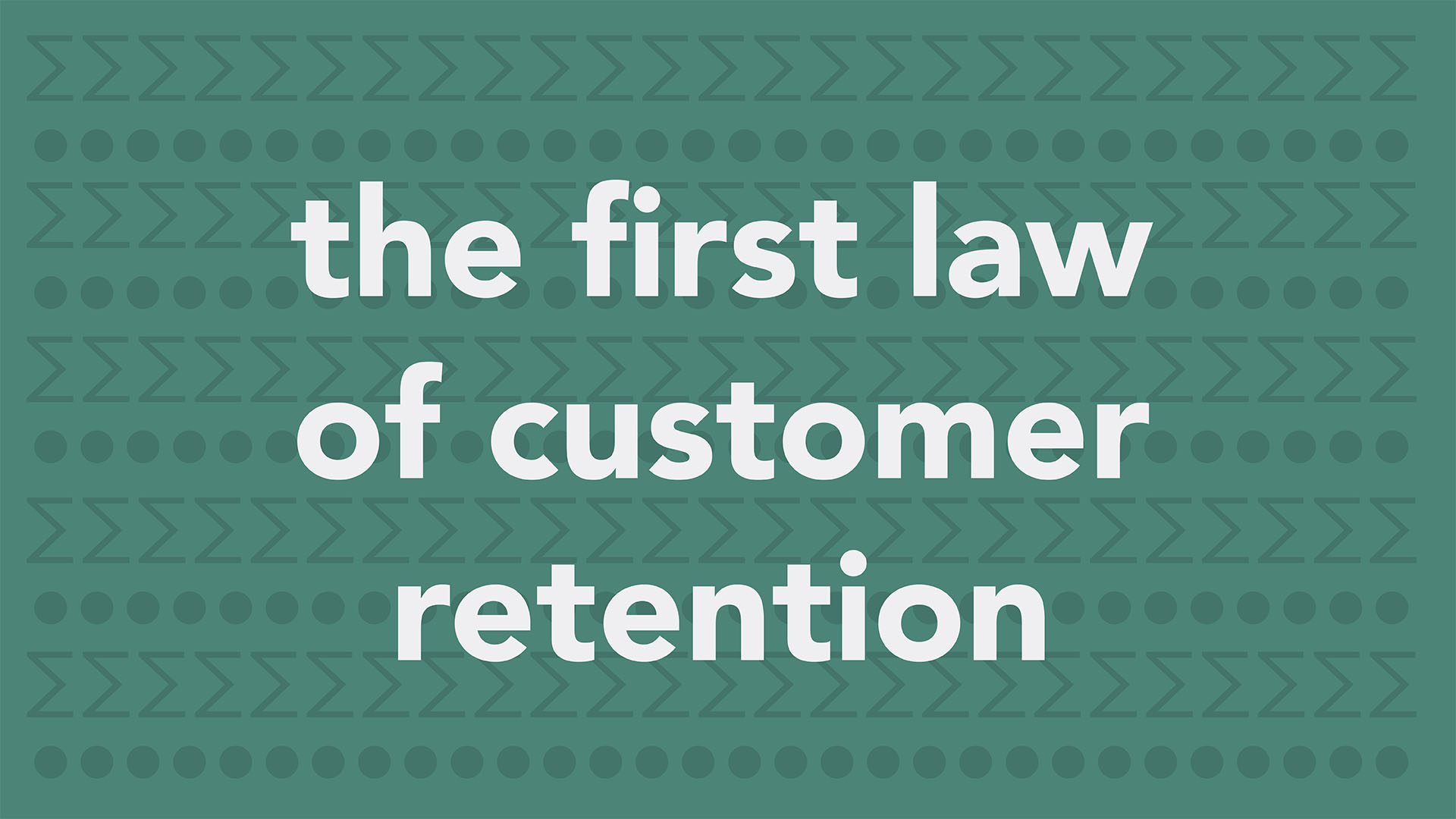Published by
The Probability of Retaining a Customer Is Dependent Upon the Ratio of Value to Effort & Cost
Retention is the cornerstone of sustainable growth and is the driver of new organic customer growth within an experience. It measures the volume of customers as a percentage of the total base who come back to an experience over time and continue to exert the effort and pay the cost to reach its value.
Whether or not a customer is retained depends on if they are getting more value than the effort and cost required to get there. If the effort and cost are higher than the value offered, the chances of retaining a customer are low. On the other hand, if the value exceeds the effort and cost to get there, the chances of that customer coming back are high. The magnitude of how high or low the probability is dependent on the nature of the ratio generated from the experience in question.
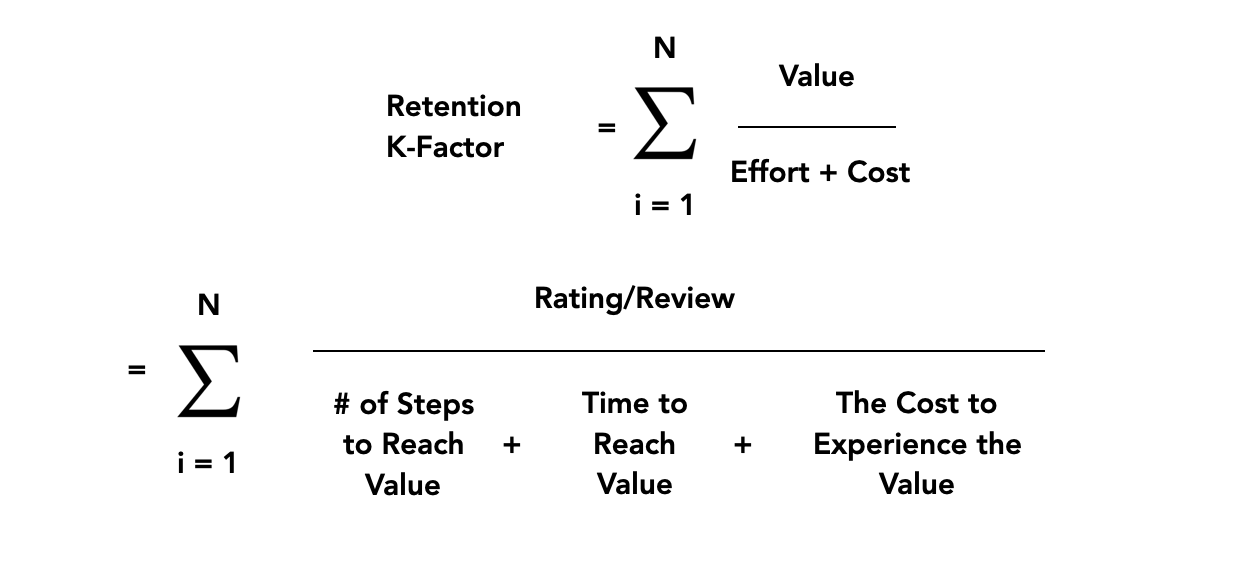
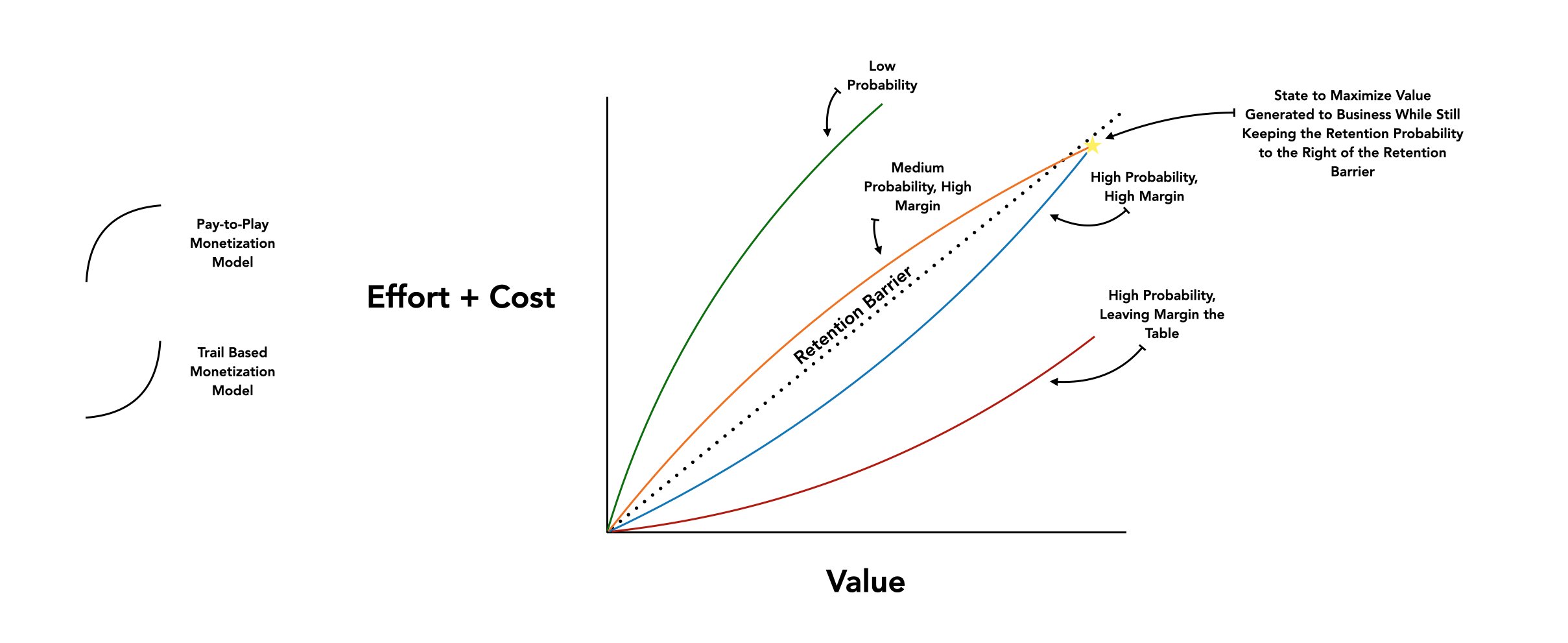
Let’s use a hospital patient portal mobile app as an example to show how this equation is used in practice. We will focus on a single consumer who has recently downloaded the mobile application for the first time. Further, let’s assume it ended up taking this now customer 20 steps to setup their account, 15 minutes to complete the entire app setup process, and it costs $100 on average per visit to the hospital. Finally, this customer ended up giving the mobile app a 3 star rating on the App Store post first use.
If we use these metrics collectively, we can determine the retention K-factor of this single customer as follows:
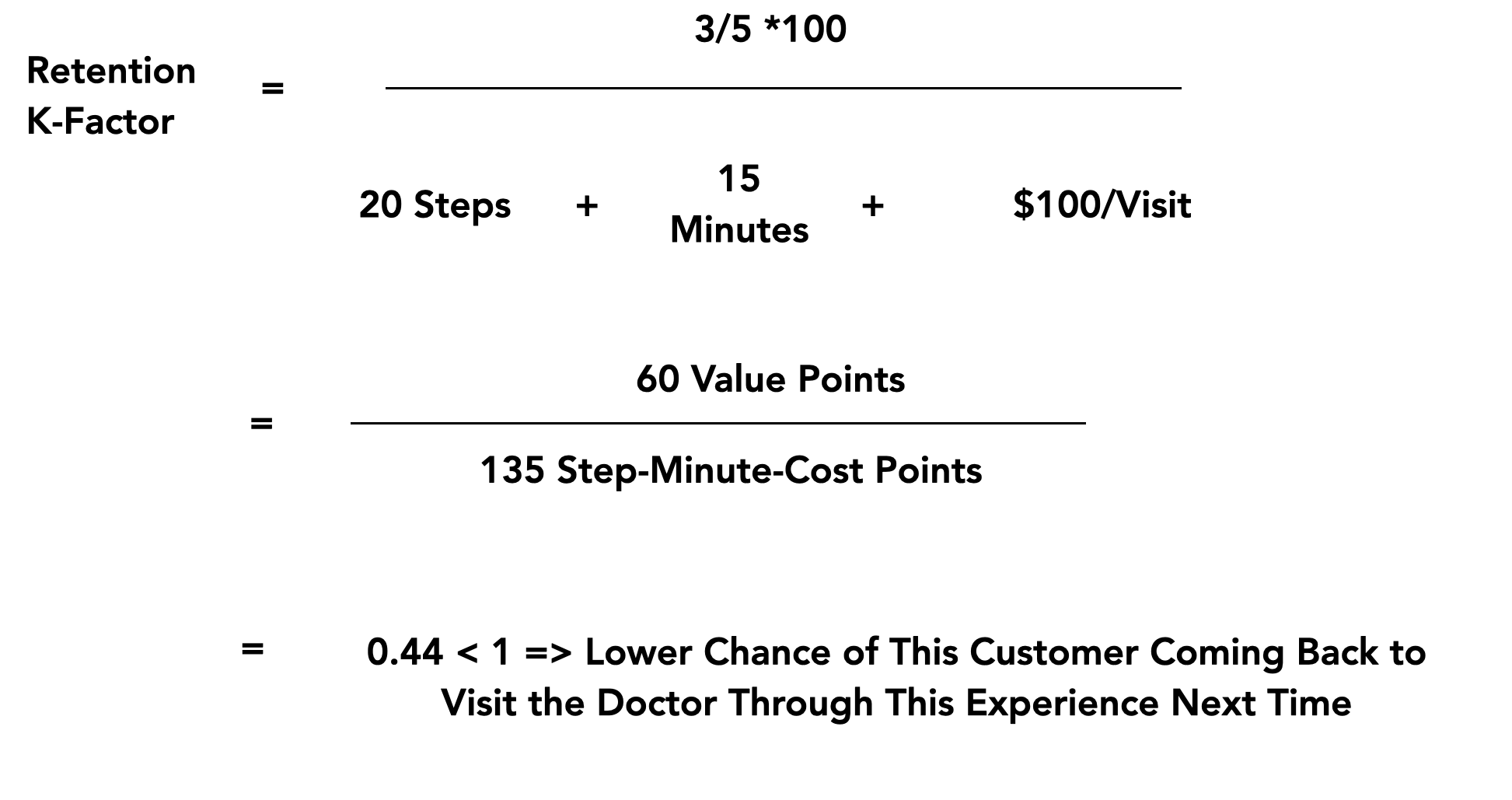
Side Note: Quantifying value and effort can be tricky for experiences that span long timeframes such as SmileDirectClub. The amount of time it takes to complete the full experience is over 100 days, the number of steps is north of 100 and the cost is over $1,000 for their clear aligners program. I gave the experience 5 stars but that single review does not quantify the full value entirely resulting in the wrong Retention K-Factor. To fix this, we would require the customer to review the experience over many different points during their journey (a rolling CSAT score for example) which are then added up together. Feedback to improve the quantification of these values (value and effort) is welcomed. Please email me at [email protected] if you have any thoughts.
What this is telling us is that this customer exerted effort and paid a cost that is almost double the value they saw and thus does not break the value barrier behind which there will always be a low probability of this customer being retained.
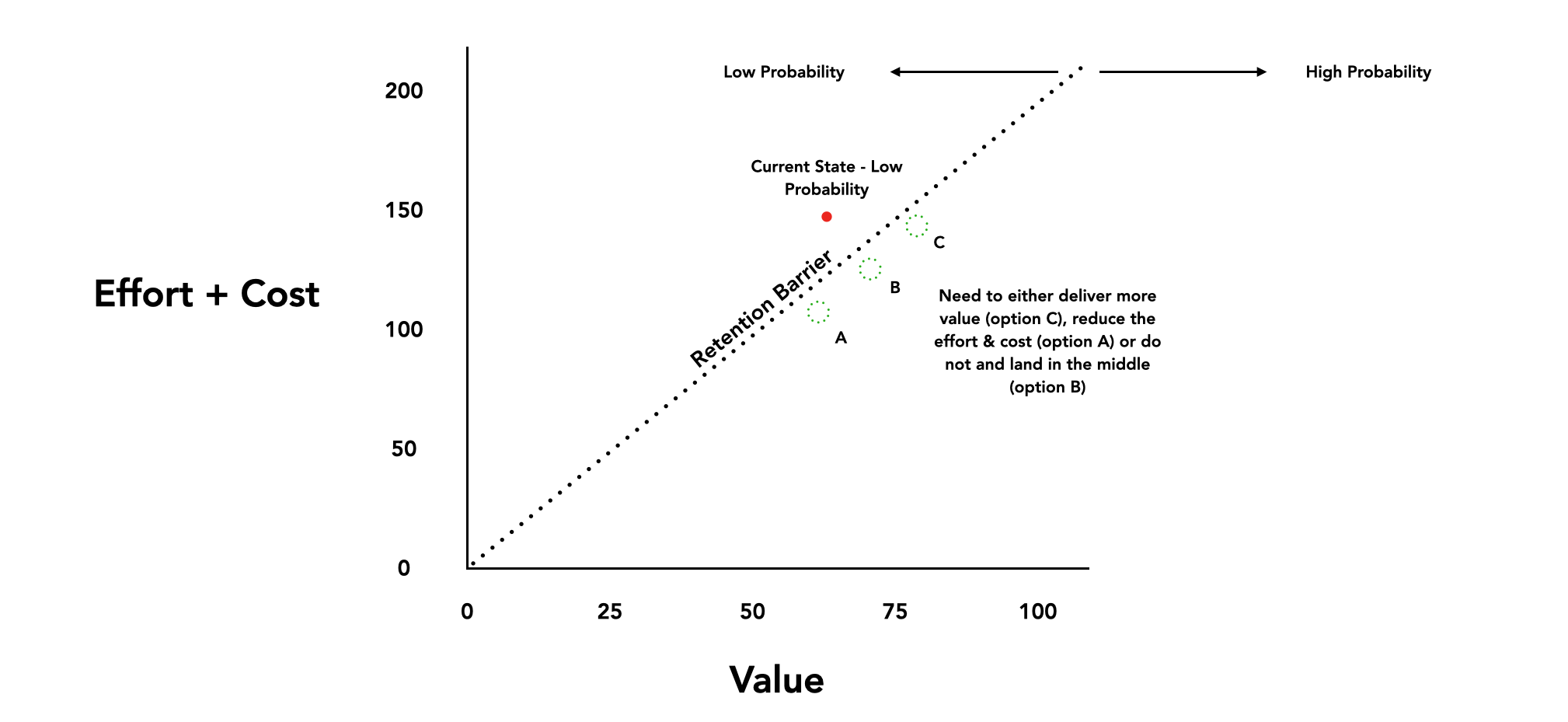
The retention K-factor barrier represents the amount of value that is needed to be delivered by an experience to a customer to get them to come back again for a corresponding amount of effort and cost. In other words, there is certain level of value that an experience needs to produce to justify the effort and cost the consumer has to endure to reach that value.
If you calculate your retention K-factor and it is less than 1, the effort and cost needs to be reduced in the form of less steps, time and/or cost. Conversely, you could boost the amount of value the user receives which can be seen in a higher rating/review.
The ideal value versus effort/cost curve is one that is always in a state >1 (to the right of the barrier). This is where exponential growth and ROI lies as it insures there is a high probability of every customer coming back time and time again, driving organic growth through word-of-mouth and social sharing as time progresses.
In summary, a customer’s decision regarding whether or not to come back to an experience can be determined as a K-factor linked to the probability that this event will happen in the future based upon the gross amount of value the user takes away from the experience post the effort and cost to experience that value. If one wants to have the highest chance of retaining a customer, the value they are seeing from the experience must always exceed the effort and cost to get that value, at all aspects of the experience.


